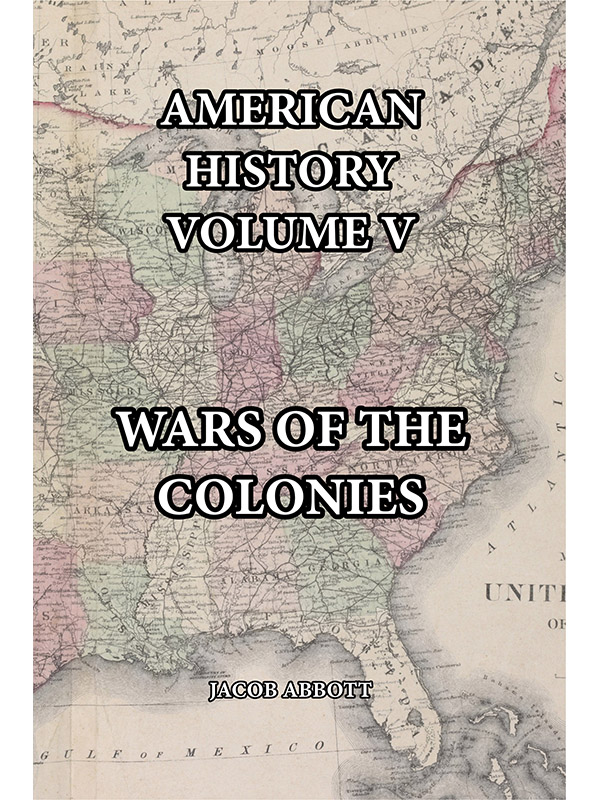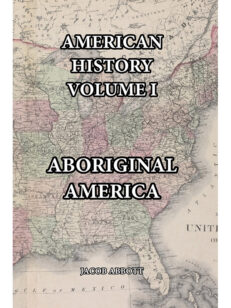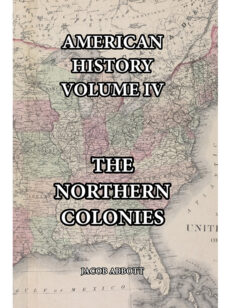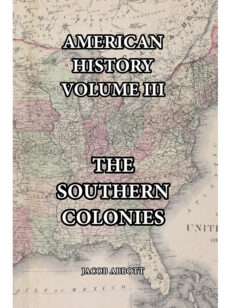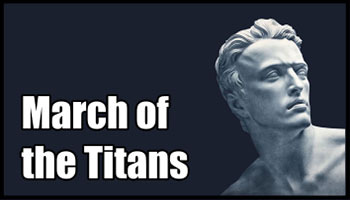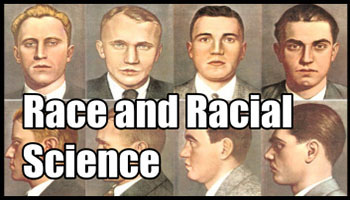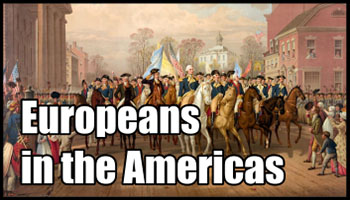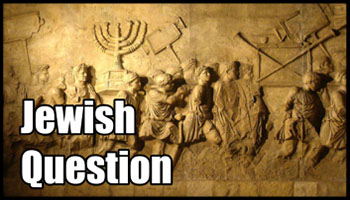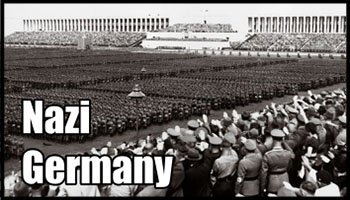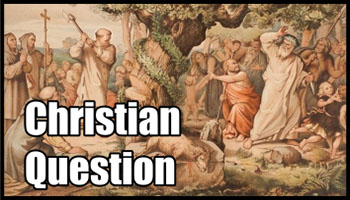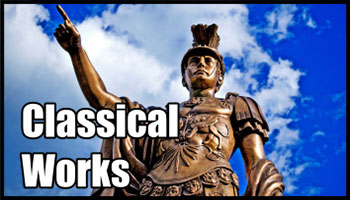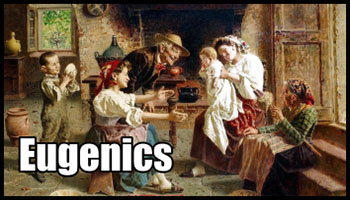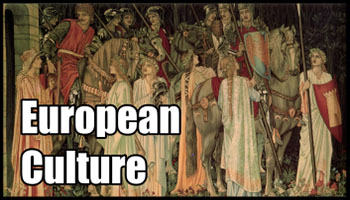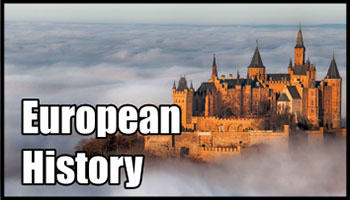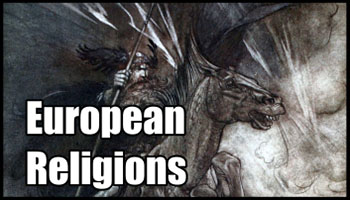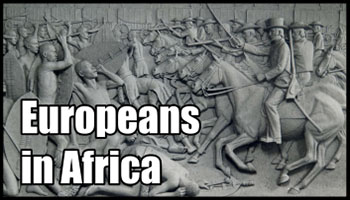Description
By Jacob Abbott. Part five of an eight part series on the history of America from its earliest times through to the age of George Washington, told by master storyteller Jacob Abbott. Starting with a brief recapitulation of the establishment of the thirteen colonies along the Atlantic seaboard of North America, this volume then details the interactions—in war and peace—of the early European settlers with the Indians and with each other.
The major early Indian wars—with the Pequot and King Philip—are discussed in little-known but fascinating detail. Included are many action-packed anecdotes of life on the frontier, the hardships of pioneer life—and duplicity and strife between Indian and European.
Read also of the clashes between the English and the French in Canada and in the interior, and the effect of the War of the Spanish Succession in North America.
“The French and the English seem determined to hate each other everywhere and at all times, and the hardships and sufferings which these different representatives of a common civilization endured, and which we might have supposed would have formed a bond of interest and sympathy to link them indissolubly together, in reality seemed to have no such effect. The dividing zone of mutual repulsion and animosity, which has for so many centuries extended along the Straits of Dover and the English Channel, now crossed the Atlantic, and spread itself along the line of the Lakes and of the Mississippi, forming an unbroken wall of aversion and hate, for a distance of two thousand miles.”
After many bloodcurdling clashes involving Indians, Europeans, and varying alliances on both sides of the racial divide, the build-up to, and the progress of, the French and Indian War is discussed.
The British conquest of Canada from the French is then dealt with, ending with the deaths of both French and English commanding generals at the battle for Quebec.
Finally the war with the famous Indian chief Pontiac is reviewed, along with dramatic events such as the Deerfield Massacre and the cunning strategies employed by Pontiac to exact many victories over the Europeans until his final—and inevitable—defeat.
Contents
CHAPTER I: The Thirteen Colonies
Subject of the Volume.—Number of the Colonies.—Recapitulation.—Virginia, 1607.—New York, 1614.—Massachusetts, 1620.—New Hampshire, 1623.—New Jersey, 1624.—Delaware, 1627.—Maryland, 1633.—Connecticut, 1635.—Rhode Island, 1635.—North Carolina, 1650.—South Carolina, 1670.—Pennsylvania, 1682.—Georgia, 1733.—The Three Forms of Colonial Government.—The Charter Colonies.—The Royal Colonies.—The Proprietary Colonies
CHAPTER II: The Pequot War
The Connecticut Indians.—The Narragansetts.—The Pequots.—English Settlements.—The Pequot Country.—Origin of the Quarrel with the Pequots.—Case of Captain Stone and His Party.—The Indian Account of the Affair.—Treaty Made.—Wampum.—Cunning of the Narragansetts.—New Difficulties.—The Oldham Affair.—Demands of Satisfaction.—Expedition of Captain Endicott.—Captain Endicott at Block Island.—The Expedition Touches at the Fort at Saybrook.—The Expedition in the Thames.—A Parley.—Landing of the English.—The Pequots Effectually Aroused.—Desperate Hostilities of the Pequots.—Condition of the Settlements up the River.—Appeal to the Government of Massachusetts
CHAPTER III: End of the Pequot War
Preparations for the Final Struggle.—Indian Auxiliaries.—The Commander.—The Rendezvous.—The Voyage.—Arrival of the Expedition at Fort Saybrook.—The Indians Put to the Test.—The Prisoner Kiswas.—Dreadful Fate of Kiswas.—Rescue of the Two Captive Girls.—Manner in Which the Rescue was Effected.—The Girls’ Account of Their Adventures.—Subsequent Adventures of the Two Girls.—Consultations in Respect to the Plans of the Campaign.—The Prayers of the Chaplain.—The Expedition Sets Sail.—Canonicus and the Narragansetts.—News from the Massachusetts Division.—The Expedition Moves On.—Fort Nehantic.—The March Continued.—Passing the Pequot Frontier.—The Halt at Porter’s Rocks.—The Night in Camp.—Advance of the Attack.—The Attack.—Condition of the English Troops after the Battle.—The Wounded Men.—The English Regain Their Ships.—Return to Fort Saybrook.—End of the Pequots.—Sassacus
CHAPTER IV: War with King Philip
Philip’s Family and Name.—King Philip Makes Professions of Friendship.—Ten Years of Peace.—Signs of a Gathering Storm.—Frivolous Complaints of the Plymouth Authorities.—General Relations of the Indian and English Settlements.—John Sassamon.—Indian Interpreters.—Mt. Hope.—Sassamon’s Warning.—The Fate of Sassamon.—Arrest of the Supposed Murderers.—The Indictment.—Result of the Trial.—The Outbreak.—Incidents of the War.—The Fortune of War is against the Indians.—The Great Swamp Fight at South Kingston.—The Summer of 1676.—Philip is Betrayed.—Philip’s Last Hiding Place.—The Death of Philip.—Contemporaneous Account of the Transaction.—Trophies of the Fight.—Dreadful Character of the War
CHAPTER V: The Lakes and the Mississippi
French Settlements in Canada.—Face of the Country on the Northern Frontier.—Rapid Advance of the French Settlements.—Friendly Intercourse with the Indians.—The Missions.—Samuel Champlain.—Progress of the French Settlements toward the West.—The Fur Trade.—Reports about the Great River.—The Governor Plans an Expedition.—Sailing of the Expedition.—Father Marquette’s Account of His Adventures.—The Wild Oats.—Discouragements.—Farther Progress of the Expedition.—Crossing the Portage.—Voyage on the Wisconsin.—Discovery of the Mississippi.—Progress down the River.—An Indian Village.—Friendly Relations Established with the Indians.—Reception by the Sachem.—Farther Progress of the Expedition.—Return of the Expedition.—Father Marquette Receives His Reward
CHAPTER VI: King William’s War
Growth and Extension of the French Settlements.—Permanent Condition of Hostility.—King William’s War.—Plans of the Campaign on the Part of the French.—Proposed Attack upon New York.—Failure of the Plan.—The expedition against Schenectady.—Surprise and Massacre of the Inhabitants.—Final Result of the Expedition.—Other Expeditions.—Effects of These Expeditions on the Indians.—Excitement in the English Colonies.—Plans of the Campaign.—Preliminary Expeditions.—Treachery of Major Waldron.—The Indians’ Plan for Revenge.—Success of the Plot.—Indian Ideas of Executing Justice on a Criminal.—The Race not Always to the Swift, nor the Battle to the Strong.—Advance of the Land Expedition.—Disastrous Termination of the Expedition.—Relief for the Canadian Governor.—Situation of Quebec.—Preparations for Defense.—The Town Summoned to Surrender.—Reply to the Summons.—The French Open Fire.—The Attack upon the Town.—Failure of the Plan.—Disasters Attending the Return of the Fleet.—End of the War
CHAPTER VII: Queen Anne’s War
Entanglement of the Colonies in European Politics.—The Accession of Queen Anne.—The Spanish Succession.—Offered Truce.—The Deerfield Expedition.—The Massacre.—Sequel of the Story.—Attack upon Haverhill.—The Assault.—Narrow Escapes.—Kindness to a Captive Girl.—Acadia.—Preparations for a New Invasion of Canada.—The Naval Force.—The Land Force.—Departure of the Expedition.—Preparations Made in Canada.—Confidence of the English Commander.—Disaster.—Total Failure of the Expedition.—End of the War
CHAPTER VIII: George Washington
Third French War.—The Final Struggle.—Washington.—Origin of the Quarrel.—Negotiations.—Washington Sent on an Embassage.—Transactions at the Fort.—The Return of Washington’s Party.—Division of the Party.—Return to Virginia.—Crossing the Allegheny.—Safe Arrival at Last.—Difficulties and Delays.—Firm Attempts to Take Possession of the Country.—Fort Duquesne.—General Braddock.—Arrival of the Troops.—Preparations for the Campaign.—Washington Joins the Expedition.—The First Stage of the March.—The Camp at Fort Cumberland.—The Indian Auxiliaries.—Braddock’s Unpopularity.—The March Rebuked.—Double Crossing of the River.—The Attack.—Carnage and Rout.—Retreat of the Army
CHAPTER IX: The Conquest of Canada
Slow Progress of the War.—Despondency of the Canadian Government.—The Marquis de Montcalm.—Grand Naval Expedition.—Preparations for Entering the River.—Situation of Quebec.—Advance of the Fleet.—The Proclamation.—Cannonading in the Harbor.—The French Fire-Ships.—Reconnoitering Party.—Attack at the Mouth of the Montmorency.—Sickness of General Wolfe.—Preparations for Carrying the New Plan into Effect.—The Attack.—Curious Coincidence.—Calmness and Composure of General Wolfe.—The Landing.—Advance of the French to Meet the Enemy.—The Battle.—Death of Both the Generals after the Battle.—Message from the Governor.—Proposed Capitulation.—The Ultimatum.—The Town Surrendered.—Further Continuance of the War
CHAPTER X: Pontiac
Cession of Canada to the English.—Taking Possession of the Country.—Pontiac.—First Interview with Pontiac.—Moderation of Major Rogers.—Pontiac’s Decision.—Ideas and Intentions of Pontiac.—The English Take Possession.—Pontiac Changes His Policy.—Progress of the Conspiracy.—Pretended Revelation from Heaven.—Concerted Attack upon the English Stations.—Stratagems.—The Mackinaw Game of Ball.—Design of the Indians.—Success of the Stratagem.—Detroit.—Construction of the Place.—Plan of Attack Concerted by the Indians.—Discovery of the Plot.—The Plot Defeated.—Attempts to Relieve the Garrison.—End of the War.—Conclusion
About the author: Jacob Abbott (1803–1879) was a native of the state of Maine who was a professor of mathematics and natural philosophy, a minister, and founder of two schools (the Mount Vernon School for Young Ladies in Boston and the Mount Vernon School for Boys, in New York City). He wrote more than 180 books and became famous for his easy-to-read style of historical storytelling, stripped of the dry dustiness which characterized other texts.
175 pages. Paperback.
The American History Series by Jacob Abbott:
Volume I: Aboriginal America
Volume II: Discovery of America
Volume III: The Southern Colonies
Volume IV: The Northern Colonies
Volume V: Wars of the Colonies
Volume VI: Revolt of the Colonies
Volume VII: War of the Revolution
Volume VIII: George Washington

